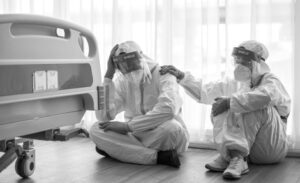This self-improvement book offers an informed opinion on the causes of burnout and presents solutions people can implement in their lives with some practice and attention.
Workplace burnout is typically found in human services professions due to their high-stress work environments and the emotional demands of the jobs. High levels of burnout are found among CEOs, the healthcare sector, social workers, nurses, teachers, lawyers, engineers, customer service representatives, and police officers. Surprisingly, it is associated with highly experienced workers with increased workloads. It appears slowly and is only recognized when it is severe. It appears when workers cannot match the expectations of their jobs, are unable to handle pressure well, and thus experience burnout. Some workers have far greater stressors but effectively deal with them and avoid burnout. In this era, there is too much advancement in economic and industrial growth, fast lifestyles, increased work demand, too many expectations in a short period of time, and incompetent and unprofessional leadership running businesses without respect for human beings and their ability to perform work to match their skills. This leads to psychological stress, which later leads to exhaustion.
Are you tired of the daily grind of work? Do you feel like calling in sick daily? Do you feel overwhelmed and unable to complete projects? You may be suffering from workplace burnout. It’s a dysfunctional state not diagnosed by labs or X-rays, but it has a real effect on people’s lives.
Burnout permeates all cultures and pervades almost all institutions and organizations. It occurs when expectations outstrip reality or when work-related conflict erupts between employee and employer. But there is good news; your body gives you warning signs, and it’s a treatable condition.
In Am I Burned Out at Work? author Dr. Salar A. Khan examines the topic of workplace burnout against the backdrop of his personal experience and his professional work and observations as a physician. He examines the role of the primary physician in screening burnout, addresses the phases of burnout, and gives advice for prevention. With a self-assessment tool included, this guide presents lessons and a step-by-step self-care solution to give you ultimate control of your health and well-being.




